巨人 "Kyojin" (Giant) / acrylic, aerosol paint, and shaped fabric strips on canvas / 121.9 cm. x 182.9 cm. / 2023
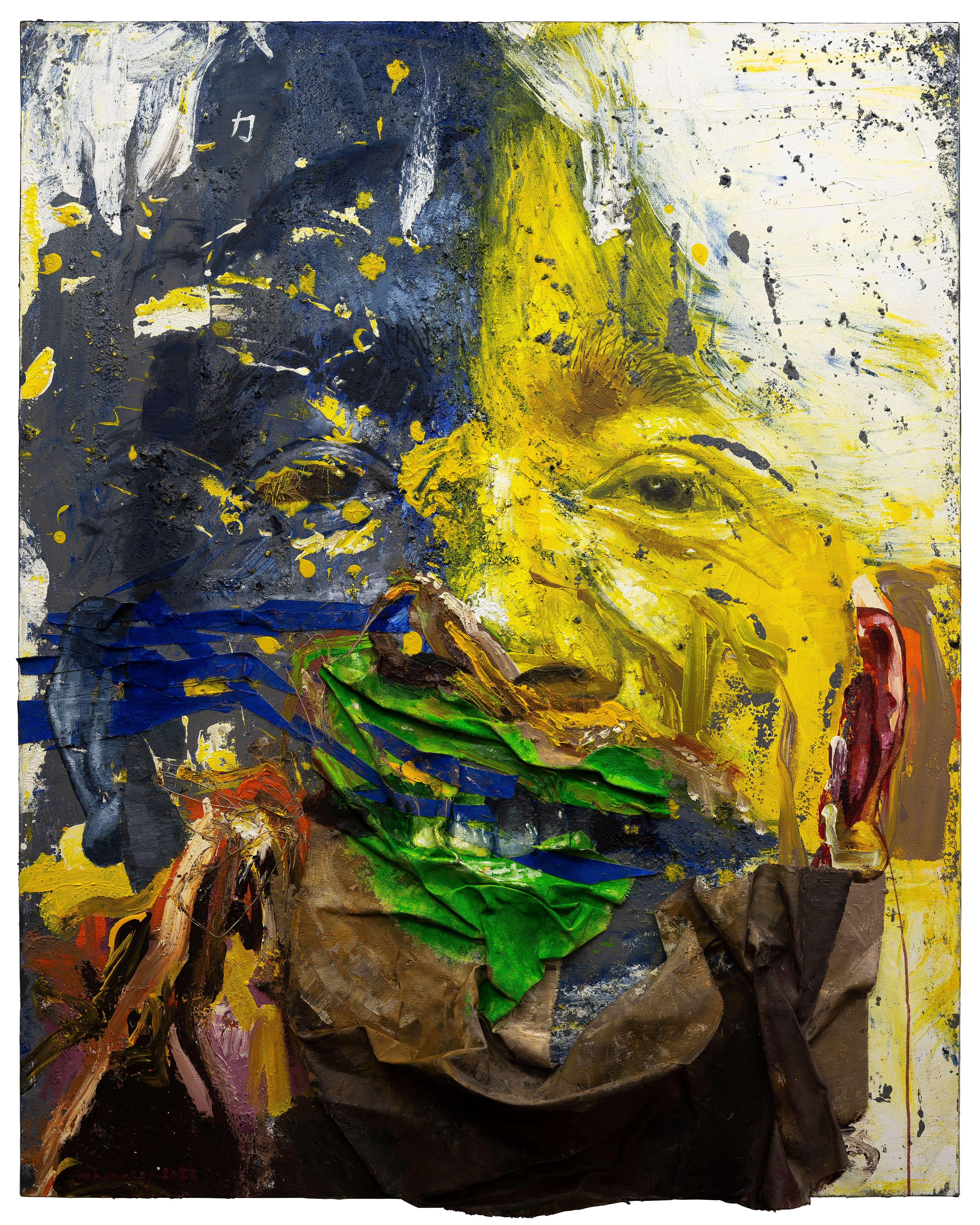
力 (ちから, Chikara, Power) / acrylic, aerosol paint, and shaped fabric strips on canvas / 145.2 cm. x 121.9 cm. / 2023
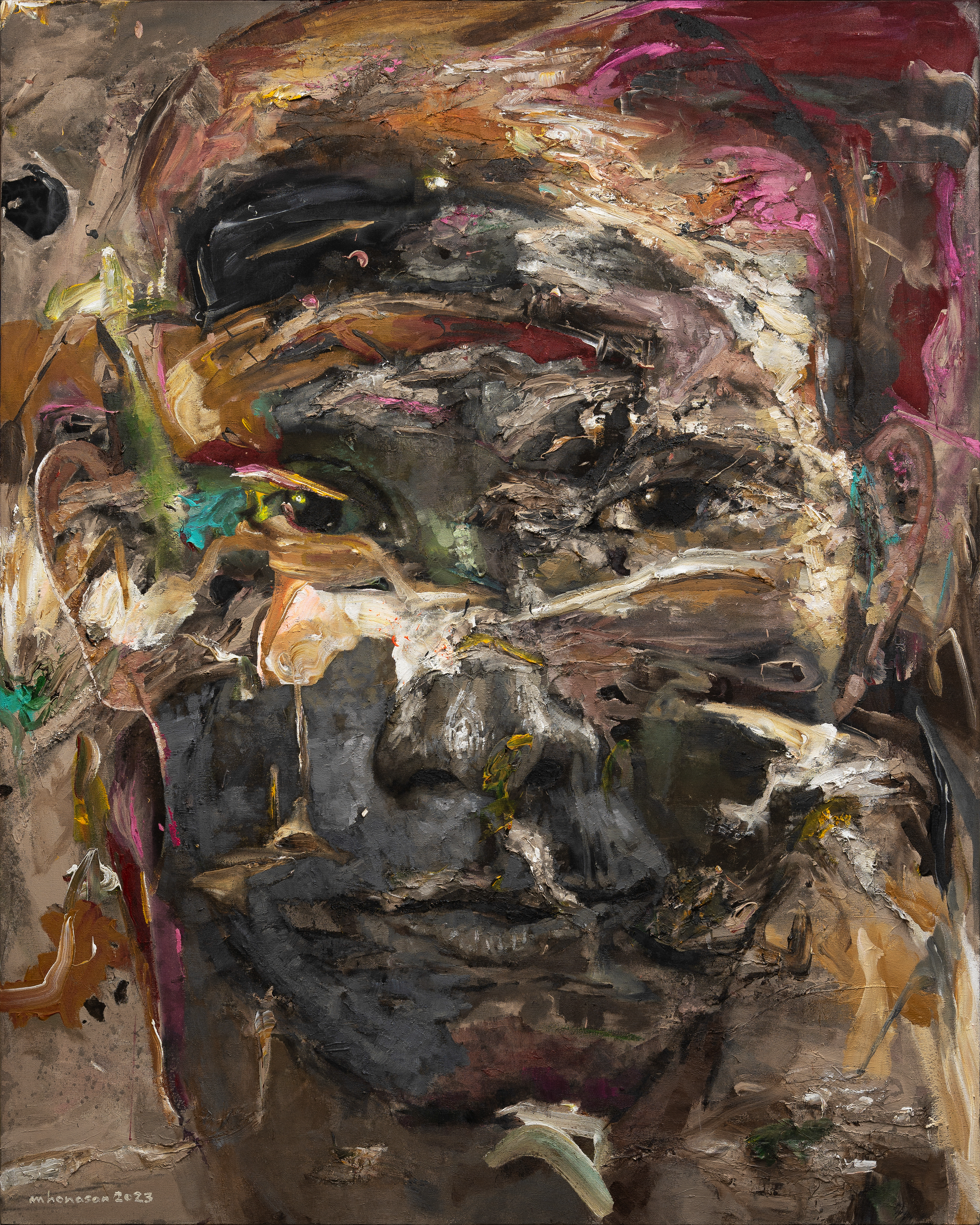
風 (かぜ, Kaze, Wind) / acrylic, aerosol paint, and shaped fabric strips on canvas / 145.2 cm. x 121.9 cm. / 2023

お邪魔します (Ojamashimasu, Sorry to disturb you) / acrylic, aerosol paint, and shaped fabric strips on canvas / 101.6 cm x 76.2 cm / 2023

お邪魔します (Ojamashimasu, Sorry to disturb you) / acrylic, aerosol paint, and shaped fabric strips on canvas / 101.6 cm x 76.2 cm / 2023
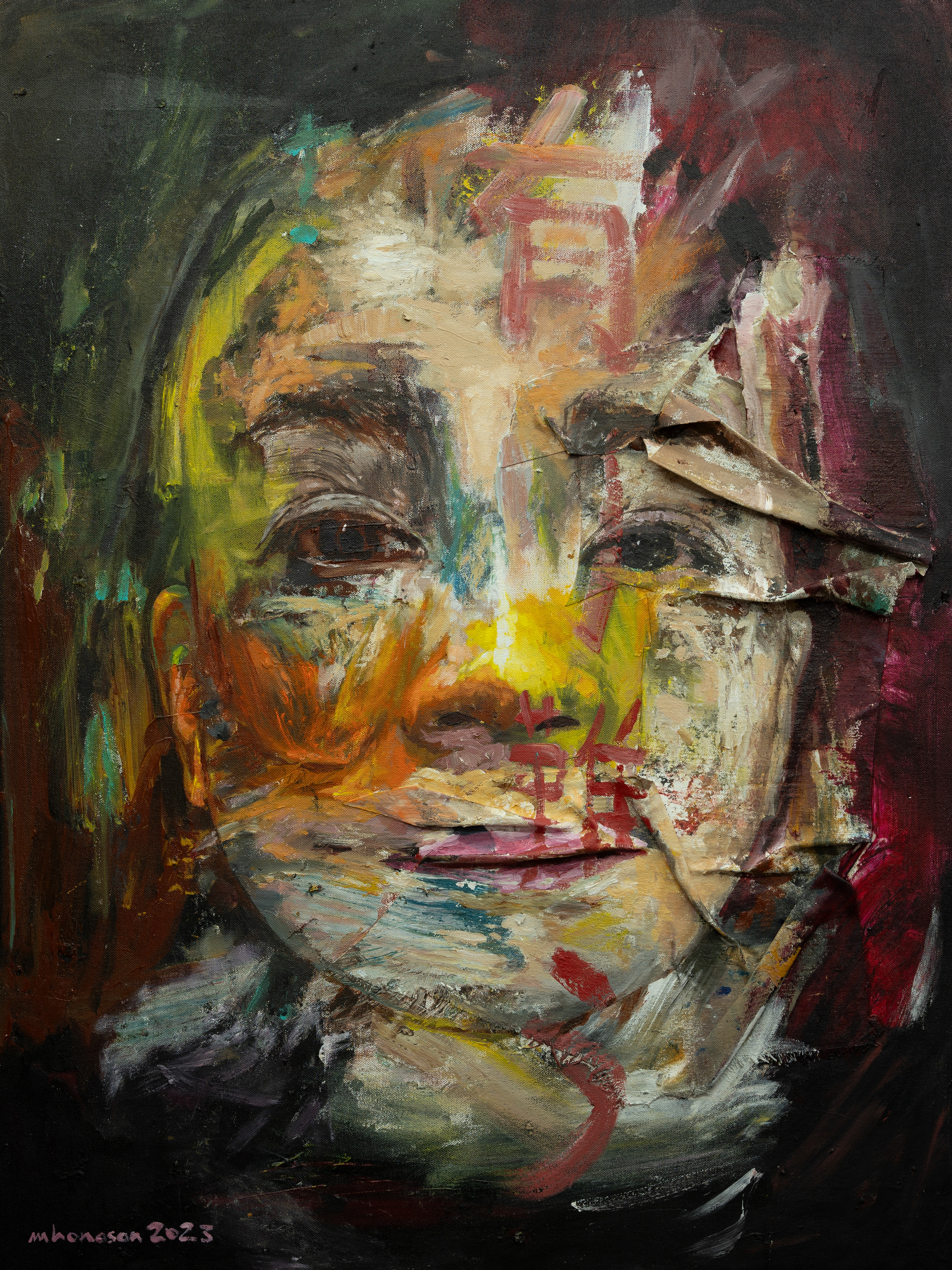
有 (ゆう, Existence) / acrylic, aerosol paint, and shaped fabric strips on canvas / 101.6 cm x 76.2 cm / 2023

雨 (あめ, Ame, Rain) / acrylic, aerosol paint, and shaped fabric strips on canvas / 101.6 cm x 76.2 cm / 2023
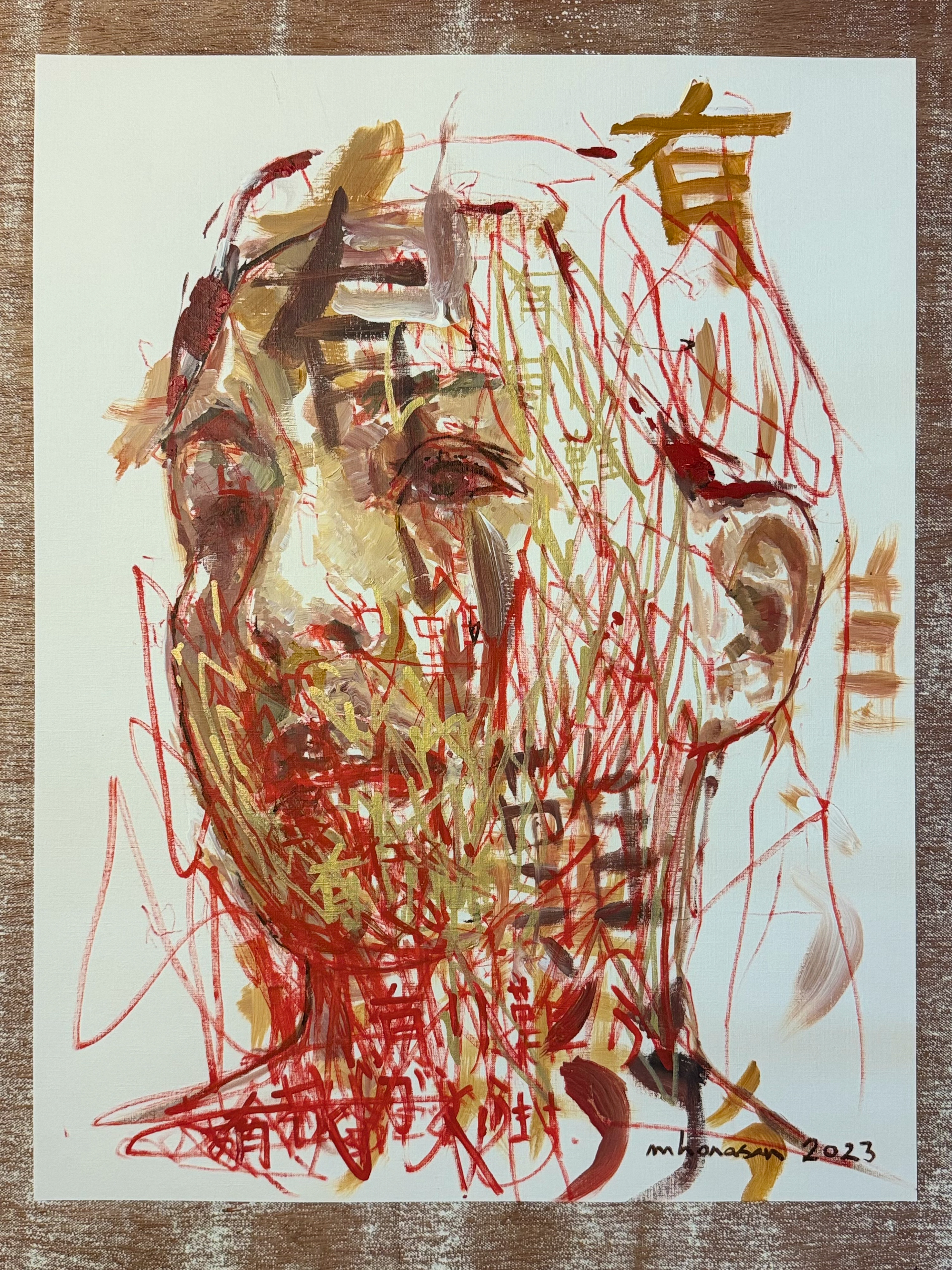
有り難う(ありがとう, Thank you) / acrylic and acrylic marker on mixed media paper / 65.1 cm. x 49.9 cm. / 2023

有り難う(ありがとう, Thank you) / acrylic and acrylic marker on mixed media paper / 65.1 cm. x 49.9 cm. / 2023
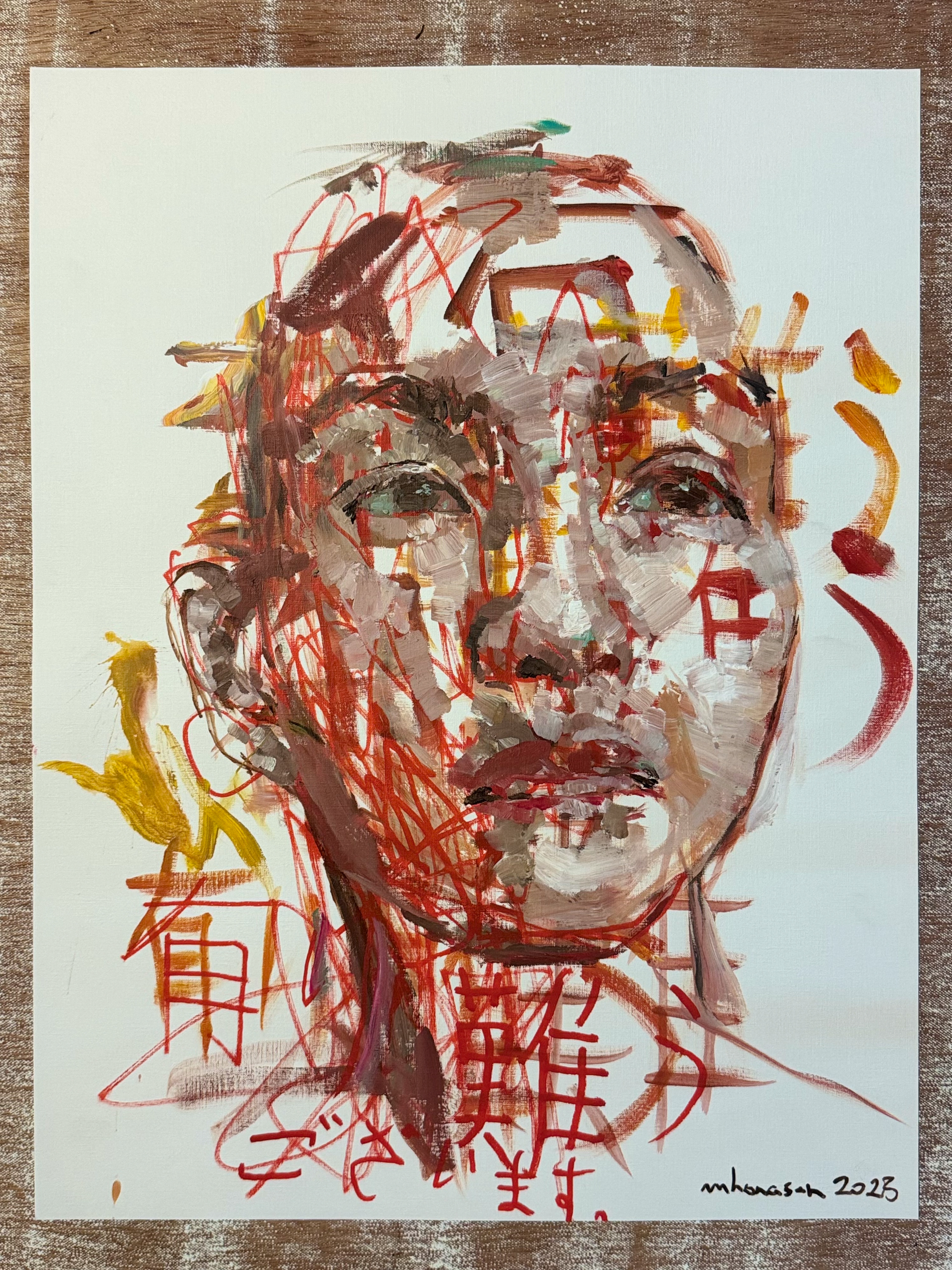
有り難う(ありがとう, Thank you) / acrylic and acrylic marker on mixed media paper / 65.1 cm. x 49.9 cm. / 2023

有り難う(ありがとう, Thank you) / acrylic and acrylic marker on mixed media paper / 65.1 cm. x 49.9 cm. / 2023

有り難う(ありがとう, Thank you) / acrylic and acrylic marker on mixed media paper / 65.1 cm. x 49.9 cm. / 2023
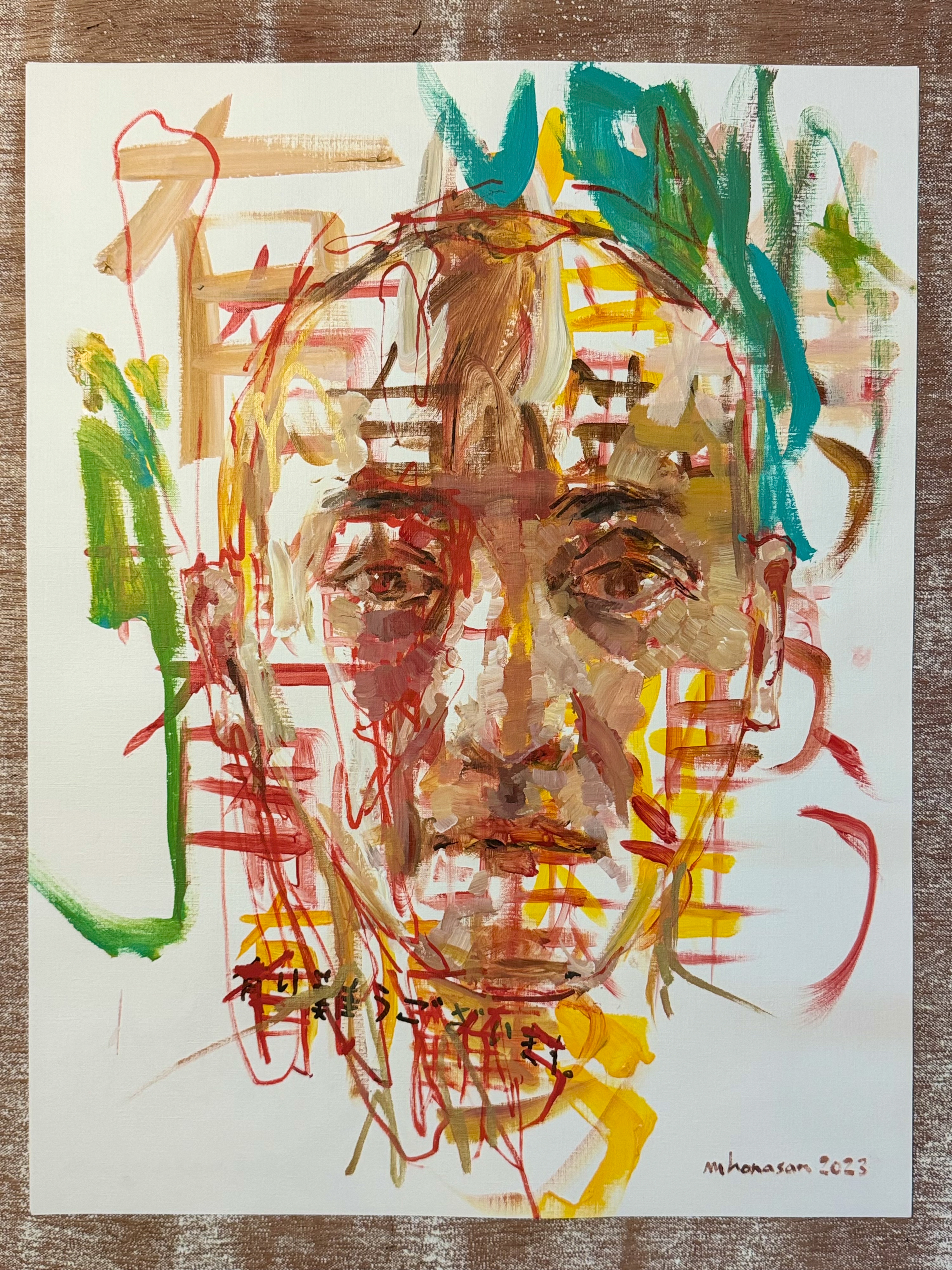
有り難う(ありがとう, Thank you) / acrylic and acrylic marker on mixed media paper / 65.1 cm. x 49.9 cm. / 2023
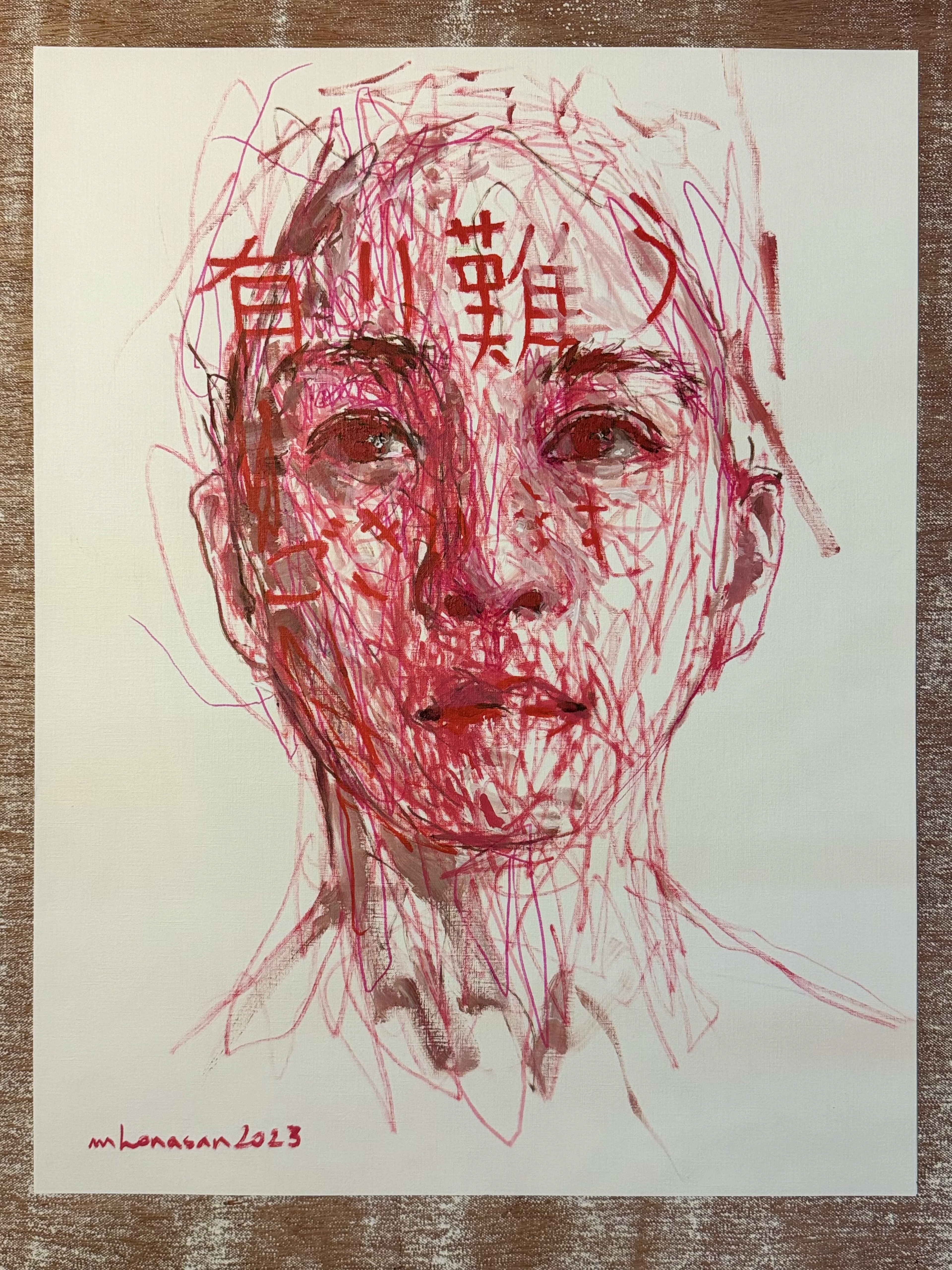
有り難う(ありがとう, Thank you) / acrylic and acrylic marker on mixed media paper / 65.1 cm. x 49.9 cm. / 2023
巨人
Kyojin, Giant
5 - 26 November 2022
YOD TOKYO • 4-26-35, Jingumae, Shibuya-ku, Tokyo, Japan 150-0001
大学生の時、日本語を学び始めた。習得したことの大半は時が経つにつれて忘れてしまったが、日本語の書記体系は記憶に残っている。中でも二つの音節文字、ひらがなとカタカナ、そして多少の漢字は忘れていない。 これらの文字が自分の潜在意識により深く刻まれたのは視覚的ネモニクス(記憶術)が効果的だったからなのかもしれない。例えば、「あ」は亀が「あー!」と言っているかのような、「と」はつま先に棘が刺さっているかのような見た目をしている。こういった風変わりな連想が、文字の形を思い出すきっかけとなる。
数年が経ち、大阪府の寝屋川市で行われた滞在プログラムに招待された。これがきっかけで過去の学びを思い出すことができた。1 ヶ月以上滞在し、その成果として大阪市で展示を行った。私の芸術実践においては、抽象概念が文字言語として機能し、簡単には定義できない感情−根深い習慣、内臓的・本能的な反射-を表現する。前回の展示では、私の作品における抽象的な側面に焦点を当てた。すなわち、風化させたり、叩いたり、歪ませたり、成形したり、貼り付けたり、染めたり、穴を開けたり、ズタズタに引き裂いたりして再利用したキャンバスの断片上に展開される反射的、行為的な絵画に重点を置いた。結果として描かれる人物像は、これらの活動を包括する容器として機能する。つまり、慣れ親しんだものを求めるという習慣的で抗いがたい要求を満たす。このシリーズの作品の一部は、2023 年の家族や友人を描いた絵画群以前、2020 年半ばに制作したほぼ完全な抽象作品に起因する。2017 年のニューヨークでの展示の際、あるお客さまが私に近づき、「なぜ、顔を崩すのか」と尋ねた。私は顔を崩していたわけでなはいと断言した。つまり、私はそれらを再構成しているのだ、と。顔の部分は、最後に描かれる要素である。
『巨人』という二文字の漢字は、文字通り『巨大な人物』を指し、型に貼られた布に描かれた大きな肖像画と、紙に描かれたミクストメディアの作品群である。メインピースとなる作品は、私の友人を元に描いた肖像画である。彼はその体の重厚感ゆえ、過去に用心棒や警備員の仕事がピッタリだった。この作品で、彼は『力士(相撲取り)』のように裸となり、白い廻しを身につけている。腕を大きく広げ、手のひらは空っぽで、彼は自身の肉と胴回りのみで武装している。左下には『玄関』とあるが、これは部屋に埃を持ち込まないために、設けられた靴
の置き場所を指す。この言葉は、121.9 x 182.8 cm の巨大なキャンバスに私が描いた最初の文字であり、視覚的な出発点として作品の残りの部分の雰囲気を伝える。 『玄関』は、私自身が古代の文化空間に足を踏み入れたということをも意味する。右上の『GWA』は、私の妻の母語『ヒリガイノン語1』で『外側』を意味するが、私と親密な距離にある物事でさえ、完全には理解していないことがあるということを思い起こさせる。このシリーズは、私が文化理解を深めるための入り口となっている。すなわち、日本古来の文字の背景にある非言語的性質と歴史は、フィリピン人である私の視点を通して、日本の考え方を熟考するための入り口として機能する。
_____________________________
1 フィリピンの西ビサヤ地方で話されているオーストロネシア語族に属する言語である。 イロイロ州、西ネグロス州に集中している。 ヒリガイノン語の母語話者はフィリピンの国内外におよそ 700 万人いる。 加えて、意思疎通がある程度可能な話者がおよそ 400 万人いる。
<English>
During my university years, I delved into the basics of Nihongo, the primary language of Japan. Although many of the lessons I absorbed have gradually faded over time, the writing system has left a more indelible mark on my memory. Specifically, two syllabaries, Hiragana and Katakana, along with a handful of Kanji characters rooted in Chinese, have persevered. Perhaps what etched these characters more deeply into my subconscious were effective visual mnemonics. For instance, "あ(‘A’) is a turtle saying, ‘aaaah!’" and "と (‘To’) is a thorn stuck on a toe." These quirky associations became anchors for recall.
Years later I was invited to a residency program in the city of Neyagawa, Osaka, Japan, allowing me to refresh past lessons. The experience lasted for more than a month culminating in an exhibit in Ōsaka-shi.
In my artistic practice, abstraction functions as a written language, articulating emotions that defy easy definition—deep-rooted habits, visceral, instinctive reflexes. Previous exhibitions have highlighted the abstract facets of my work, emphasizing reflexive, gestural painting executed on repurposed canvas fragments subjected to weathering, beating, distressing, molding, pasting, dyeing, puncturing, or tearing into shredded pieces. The faces and figures painted afterward act as containers for all this activity, satisfying a habitual, irresistible need to seek the familiar. Some pieces in this series originated as nearly complete abstract works created in the middle of 2020, before the faces of family and friends were painted in 2023. During an exhibition in New York in 2017, I was approached by a guest who asked me why I “damaged” the faces.I clarified that I was not damaging the faces; I was rebuilding them. The faces were the final elements to be painted.
『巨人』 (Kyojin) or Giant, two Kanji which literally mean “huge person,” is a collection of large portraits rendered on shaped mounted fabrics, and some mixed media pieces on paper. The main title piece is a figurative portrait based on my friend whose heft made him ideally suited for work as a bouncer and security in the past. In the piece, he is stripped like a “Rikishi” (wrestler) with only a white mawashi (Sumo wrestler’s belt/loincloth), with arms open, palms empty, he is armed with nothing but his flesh and girth. On the lower left side is the word 『玄関』 (genkan), an area usually found in entryways where footwear are placed before entering to avoid bringing dirt into the main part of a home. This word was also the first character I wrote on the large 72 x 48 inch canvas, serving as a visual starting point to inform the tone of the rest of the piece. “Genkan” also signifies my own entry into such an ancient cultural space. On the upper right side is the word “gwâ” which means “outside” in my wife’s native tongue of Hiligaynon—a reminder to myself that even within my own intimate space there are still cultures I have yet to fully know.
This series serves as a gateway for me to understand this ancient culture; the gestural quality and history underneath the written script of Nihongo serve as an entry point to contemplate Japanese ideas through my own perspective as a Filipino.